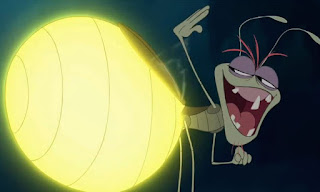Merfolk #1
I wanted to start something new. In doing research for Ancient Seas #3, I stumbled across a woman called Mary Anning. She was a very interesting woman and did a lot for paleontology, with very little credit until recently. So I've decided to do a segment about her and other folks who contribute to their field or conservation. I'm calling it Merfolk. So without further waffle...
Mary Anning
 |
| Mary Anning with her dog, Tray. Photo from the BBC |
Lived: Lyme Regis, Dorset, UK
Era: Victorian
Life Span: 1799-1847
Occupation: Fossil collector/trader; paleontologist
Mary Anning was a woman from Victorian England who made a number of key discoveries about prehistoric life on our planet. She hunted for fossils along the English coast after winter landslides revealed them along the shore. She then sold them in her shop to geologists, paleontologists and other men of science who took her discoveries as their own. She did not recieve acolades for her dscoveries until well afeter her death. Got to love Victorian England, right?
But her findings contributed to massive overhauls in the scientific thinking of the time. At the time, strong Christain views had society believing that the world was only 10,000 years old, that extinction was not a thing and that all current creatures had always existed. Thankfully, discovering full dinosaur skeletons went a long way to changing that.
She came from a poor family, her father a carpenter who supplemented his wage by searching for and selling fossils. It was a family business. She was educated at a Congregationalist Sunday School, which was unconventional as most people were part of the Church of England. With her father dying when she was only eleven, more strain was put on the family. But their first big find came shortly after in 1811, when they found a complete ichthyosaur skull. Mary, herself, discovered the rest of the skeleton - a 21ft specimen in total. The marine dinosaur gave evidence that that part of the UK used to be submerged.
Over the next ten years, Mary made many more significant discoveries. This included a new species, evidence of another outside of Germany and, the identity of certain fossils from bezoars to fish. The fossils she discovered were from the Jurassic era, usually of the marine variety. The new species she discovered was the plesiosaurus. Prior to Mary Anning's findings, there had never been evidence of pterosaurs outside of Europe. She identified ink sacs inside belemnite fossils, indicating they were cephalopods, as well as identifying bezoar stones as fossilised poop.
With her discoveries, Henry De la Beche was able to produce the first circulated recreations of what prehistoric life might have looked like. He sold these pictures to the public and sent the funds to Mary, to support her as poverty never really left her life. He was one of the few people who acknowledged her work while she was living. Many people regarded her an expert and saught her advice and knowledge, but most failed to get her proper accreditation. This was a sore point for Mary Anning and common amongst the working class labourers who were often the ones who put the hard work in.
The one time she was published in her lifetime was a letter to a magazine about Natural History, telling them of an error they had made. It was a real tragedy, considering just how much she contributed. Her shop was frequented by geologists, paleontologists and fossil collectors from all over.
In the last years of her life, Mary Anning was in ill health. Her fossil hunting and trading took a back seat. She unfortunately had breast cancer, which killed her when she was 47. In a few short years after her death, her was given recognition for some of her work. Although she did not recieve proper acolades until 163 years after her death. However, Dickens said this of her in 1865, "the carpenter's daughter has won a name for herself, and has deserved to win it." So it's nice to see she got some recognition almost in her lifetime.
 |
| Annning selling her wares. From the BBC |
Fun Facts!
- She nearly died in a landslide, collecting fossils. It unfortunately killed her beloved dog. (Not so fun, I'll admit.)
- It is believed she is the inspiration behind the tongue twister "She sells seashells". But this is not conclusive.
- While she was living, two fossils were named after her. The number increased in the years after her death. Including a species of ichthyosaur and plesiosaur.
- Of the ten children her parents had, only Mary and her older brother Joseph were the only ones to live to adulthood.
- At 15 months, she was involved in an incident which killed the three women looking after her. A tree was struck by lightning which killed the women but left Mary unharmed.
- She took over the family fossil business in 1825.



Comments
Post a Comment